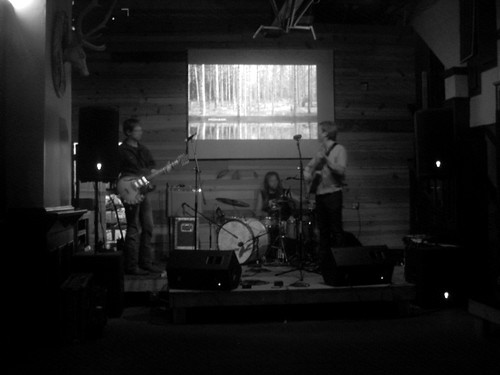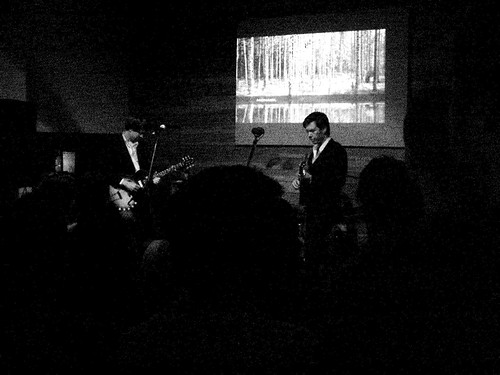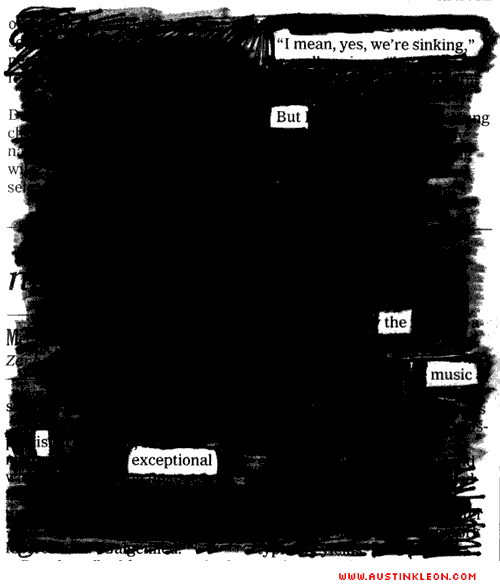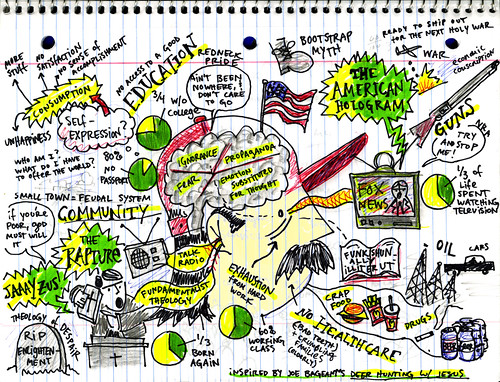“Ever had one of those nights where you just couldn’t get drunk?”—Bill Callahan
No, I haven’t.
We got to Bill Callahan‘s “secret” show with Jonathan Meiburg and Thor Harris (both from the band Shearwater) just in time to listen to them warm up during their soundcheck (and snap a picture through the window). Callahan is one of my favorite songwriters, so I was excited to see him again (we saw him a couple years ago in Cleveland).
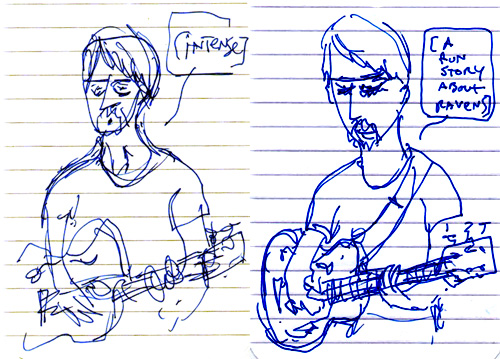
Jonathan Meiburg opened up with a round of songs on banjo and guitar. Then Callahan came out with Meiburg on guitar and Harris on drums.
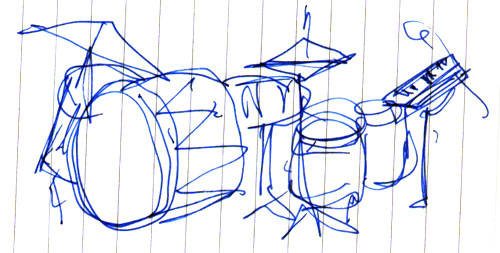
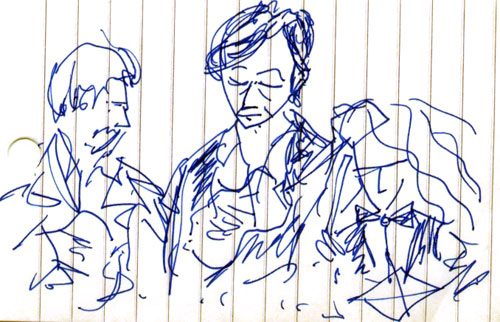
Great set. Harris and Meiburg gave the songs a heavy edge—much different than the Cleveland show with a fuller, subtler band (including the fantastic Jim White on drums!)
Setlist:
- Sycamore
- Nothing Rises to Meet Me
- Our Anniversary
- Diamond Dancer
- Say Valley Maker
- Rock Bottom Riser
- Cold Blooded Old Times
- Vessel In Vain
- a new song about birds: “too many birds in one tree…“
- Let Me See The Colts
Encore:
- The Well
- In The Pines
Here’s a four-minute Youtube reel of video clips I shot:
Links:
